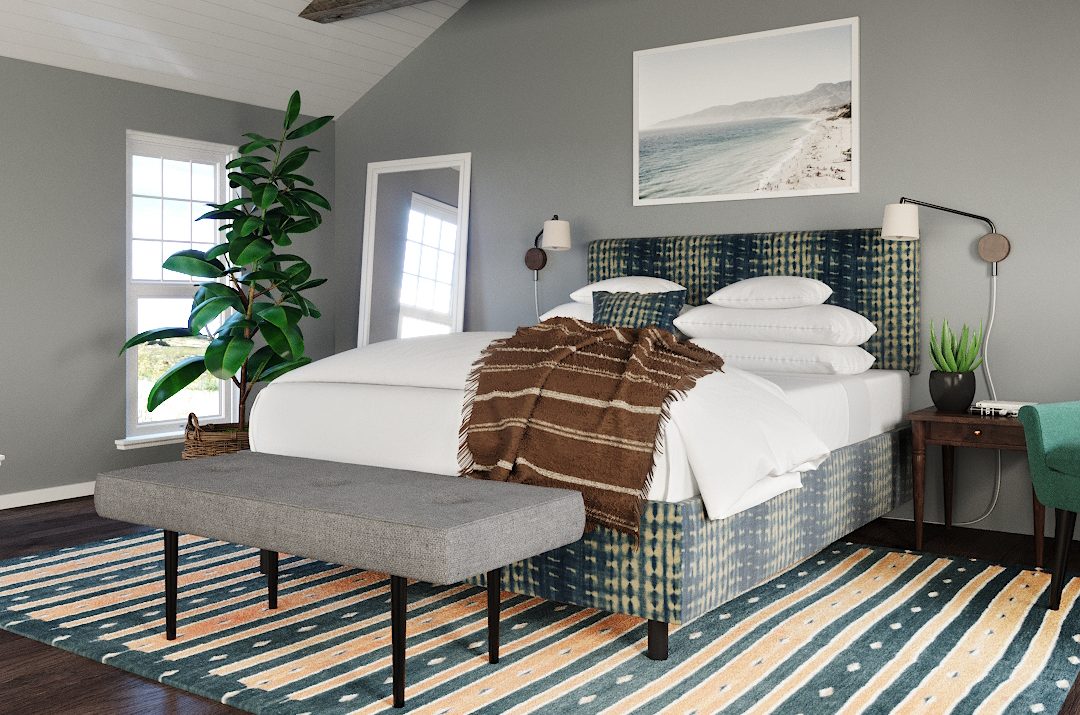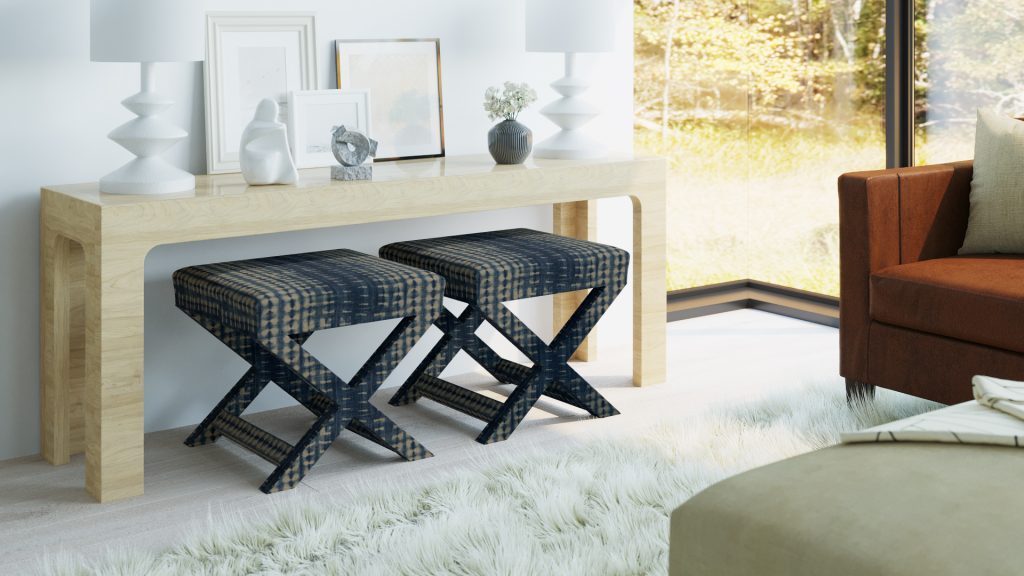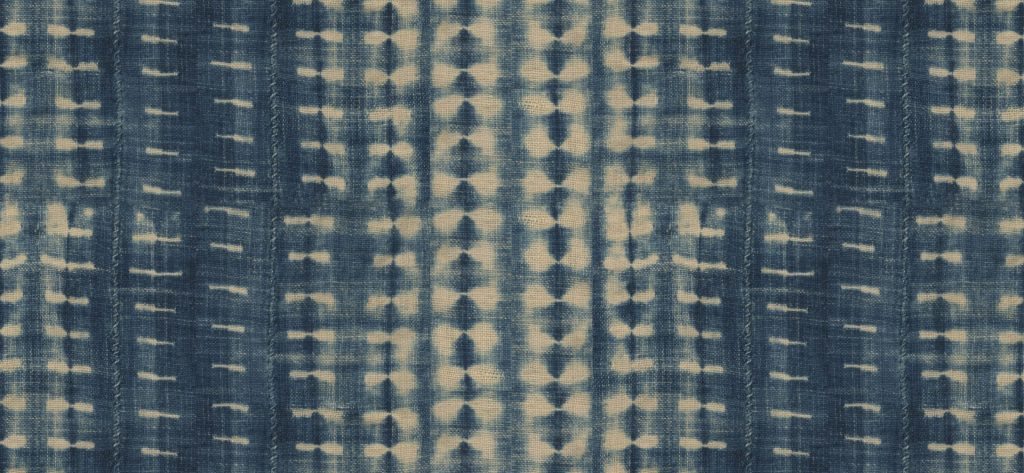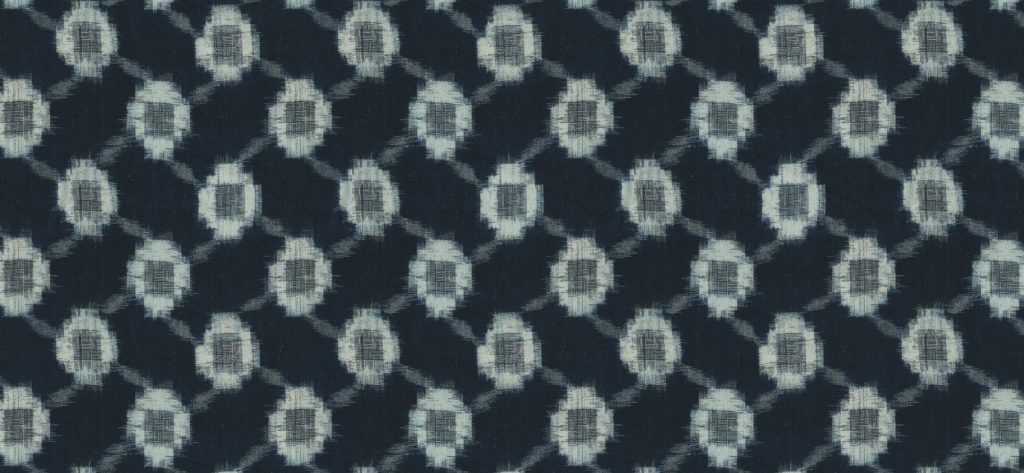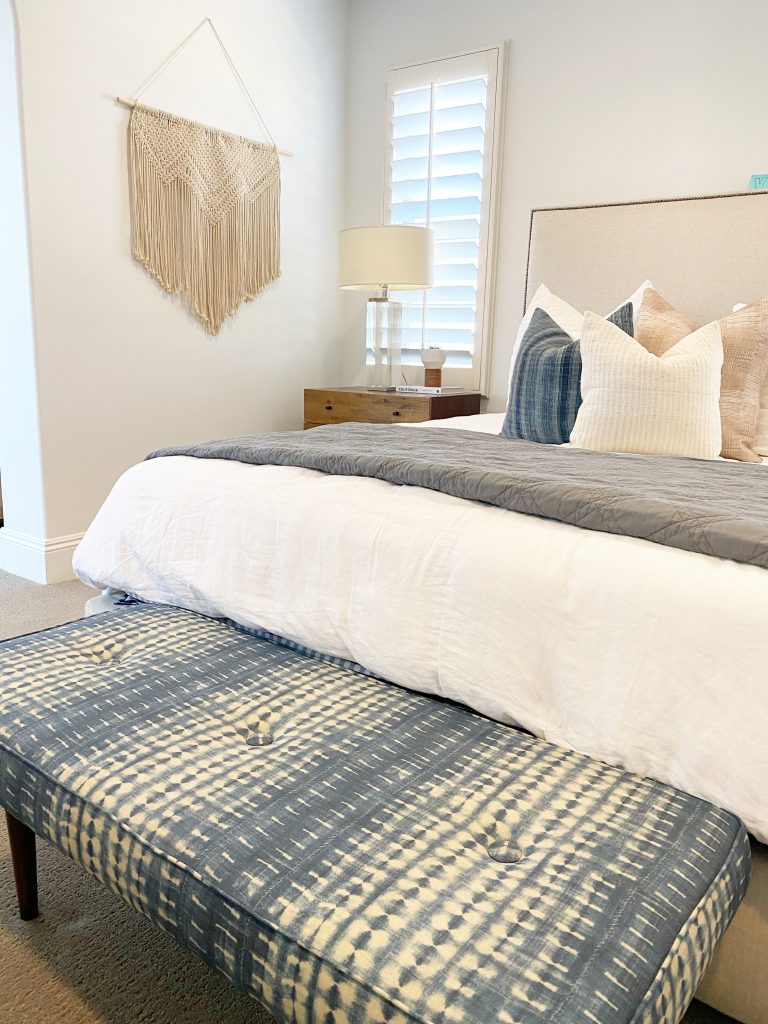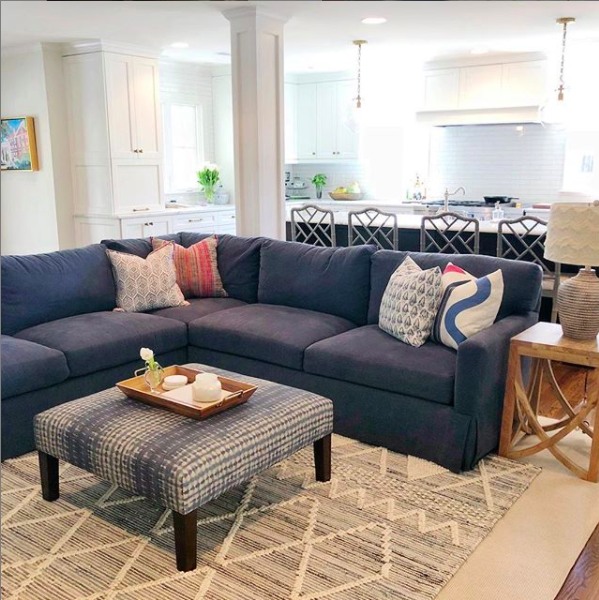Lately, we’ve been hearing a lot about Japanese shibori fabric. This deeply dyed textile is showing up in a mélange of patterns on everything from dresses to sofas to face masks. But what is shibori fabric, exactly? How is it different than tie-dye? And why is it so popular?
Here’s your deep dive into everything you’ve ever wanted to know about shibori fabric, and specifically, shibori furniture.
What is shibori?
“Shibori” is an ancient Japanese dyeing technique that dates back to the 8th century. It originated in China but was popularized in Japan out of cultural necessity and artful ingenuity. In ancient Japan, only royalty or the very wealthy were permitted to wear elaborate silks and other elaborately decorated garments, so shibori was employed by the working classes as a means to dress up the linen, hemp, and other fabrics available to them.
What does “shibori” mean in Japanese?
While there is no direct word in English for the Japanese word “shibori,” it loosely translates to “to wring or squeeze.” This process brings to mind modern tie-dye methods, which brings us to the next questions…
What is the difference between shibori and tie-dye?
The shibori dyeing process is loosely related to modern tie-dye techniques, but not the same. Tie dye and shibori share one basic thing in common, which is that they both are made using resistance techniques – ways of binding off sections of fabric and then dipping the fabric in dye, creating relief patterns. For instance, to create a tie-dye t-shirt, you would twist the fabric and then tie sections of it off using rubber bands, then dip parts of the shirt in various colored dyes to produce different patterns. Shibori also binds off sections, but this is where their similarities end. Tie-dye is pretty simple; shibori dyeing techniques are deeply labor-intensive and – as an ancient art form – meditative. Tie-dye generally produces mostly swirled patterns, whereas shibori produces intricate patterns, often in remarkable detail. Additionally, while tie-dye usually comes in a rainbow of colors, shibori restricts itself to a single color, relaying its beauty through the artful design.
The next question explains more in detail how shibori is made, to give you even more insight into how it differs from modern tie-dyeing.
How is shibori fabric made?
There are six techniques used to create shibori fabrics. Each of these use different means to block off sections to “resist” the dye from taking to the fabric, thus creating specific patterns:
- Kumo Shibori uses various miscellaneous objects tied around the fabric to create unique patterns
- Miura Shibori employs a shibori technique called “plucking,” in which pieces of fabric are carefully plucked out by hand using a hook and needle to create intricate, repeated patterns
- Kanoko Shibori uses elastic bands to tie off sections of the fabric, much like modern tie-dye methods of today
- Arashi Shibori wraps the fabric around a pole made of wood or copper, creating a diagonal striated pattern
- Nui Shibori employs hand stitches and wooden dowels to yield detailed and precise patterns
- Itajime Shibori uses pieces of wood to create bold, repeated geometric patterns
Why is shibori blue?
Shibori came into fashion alongside traditional indigo dyeing, so the two are closely aligned. Centuries ago, indigo was the primary dye available. Today, shibori can also be found in a variety of rich, saturated colors ranging from vivid fuschia to emerald green. For the most part, however, indigo dye and other beautiful shades of blue still hold the most appeal for shibori lovers. People often compare it to the look of your favorite worn-in denim.
What is the best fabric for shibori?
Shibori works best on silk, hemp and cotton. These organic materials take the deep dye best. Cotton or linen shibori fabrics work really well for upholstery and pillows, as they are hardy and can be cleaned the same way you would any other fabric, but we recommend steering clear of silk shibori for sofas or other furniture – that’s an expensive cleaning bill! If you’re looking to DIY shibori at home, opt for a plain white fabric in any of these materials to give you that beautiful contrast.
Shop the look: Mid-Century Bench in Shibori | Photo credit: @jb.interiors.ca
How do you wash shibori fabric?
This depends mostly on what type of item you’re washing, but in general, cotton or hemp shibori fabrics can be washed on gentle in cold water and line dried. A silk shibori garment should be professionally dry cleaned. We offer two shibori fabrics in our collection, both of which can be spot treated using soap & water. But the beautiful thing about that fabric is that it’s great if you have kids or pets, or if it’s being used as upholstery in a high traffic area (think: the family room sectional). The intricate pattern is an expert stain concealer.
Why is shibori so popular?
First and foremost, shibori is gorgeous. The colors are deep and rich and the patterns extraordinary, ranging from watercolor-like waves to bold and intricate webs. The meditative quality of the shibori process is infused in the fabric, giving each creation an almost spiritual quality. But most of all, we love this technique because no two pieces of shibori fabric are ever exactly alike. This ancient craft of dyeing creates original (and often surprising!) pieces each and every time, guaranteeing that your shibori is special and unique to you.
Shop the look: Cocktail Ottoman in Shibori | Photo credit: @progenyinteriors
How does shibori look on furniture?
Shibori fabric can be used in a number of furniture upholstery applications, from the statement sofa to the accent ottoman. Often a favorite look for a modern bohemian or global eclectic vibe, the Shibori print conveys the look of vintage textiles from around the world. Shibori upholstery looks great as a complement to a neutral linen (perhaps as a throw pillow pair), or as a soothing yet conversational centerpiece on a upholstered bed.
Here are a few of our favorite Shibori custom furniture pieces:
- Throw Pillow in Shibori
- Square Back Bed in Shibori
- Mid-Century Bed in Shibori
- Drum Ottoman in Shibori
By: Debra Goldstein, Staff Writer, The Inside

